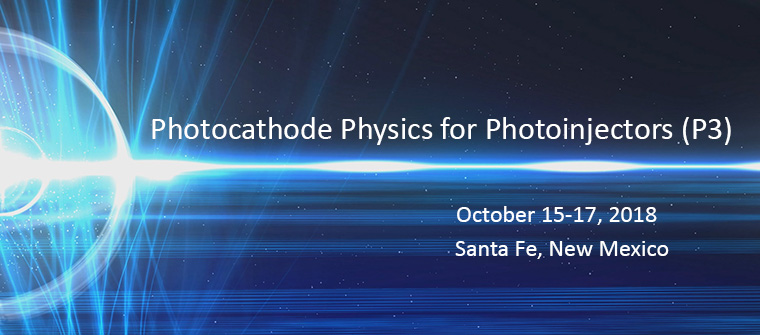Conveners
Session 2: Application Oriented Research: Low Average Current
- Pietro Musumeci
Ultrafast electron scattering (UES), including diffraction, imaging, and energy-loss spectroscopy, are emerging new techniques for visualizing dynamics of matter at atomic levels. These rapidly advancing new developments have generated scientific outcomes with broad and profound impacts in quantum material, solar energy conversion, chemical reaction, high energy density physics, and biology,...
Photocathode physics plays a critical role in the formation of space and time resolution in time resolved stroboscopic electron scattering experiments like electron diffraction, microscopy, and spectroscopy. As effective photoemission temperatures approach single meV values, it is feasible to consider sources for <= 1 electron per pulse which approach the uncertainty principle emittance limit,...
The brightness of electron beams is limited by the smallest possible mean transverse energy (MTE) of electrons emitted from the photocathode. In this talk, I will show the various factors that limit MTE and show how by minimizing each of these factors we obtained a record low MTE of 6 meV from the (100) surface of Cu. I will also describe the instrumentation developed to measure such a small...
Operating photoemission electrons sources with photon energy near the work function has been shown to minimize the intrinsic emittance, but at the cost of several orders of magnitude lowered quantum efficiency. Thus, modern femtosecond photocathode electron sources would require very high intensity laser pulses to extract significant charge, which results in dynamic changes to the electronic...
n-type ultra-nano-crystalline diamond (n-UNCD, a synthetic polycrystalline, a mix of sp3 and sp2 phases, diamond
with semimetallic electron conductivity) has emerged as a negative electron a±nity (NEA) photocathode platform
that can be engineered toward a speci¯c targeted application. This presentation summarizes our experimental results
related to (i) quantum e±ciency (QE); (ii)...
The majority of materials used as photocathodes for accelerators have been discovered through empirical methods. This process is often trial and error, without significant input from computational materials science. We have developed an approach that is heavily informed by computational resources such as density functional theory (DFT), materials databases, and high-throughput techniques to...
One way of increasing the electron beam brightness in radiofrequency electron guns is by shrinking the photoemission area. Unfortunately, sharp tips are not good candidates to be used in high field RF environments due to field emission and stability issues.
We use Surface Plasmon Polariton wave interference to produce sub-micrometer emission areas. Radially symmetric nano-structured patterns...

